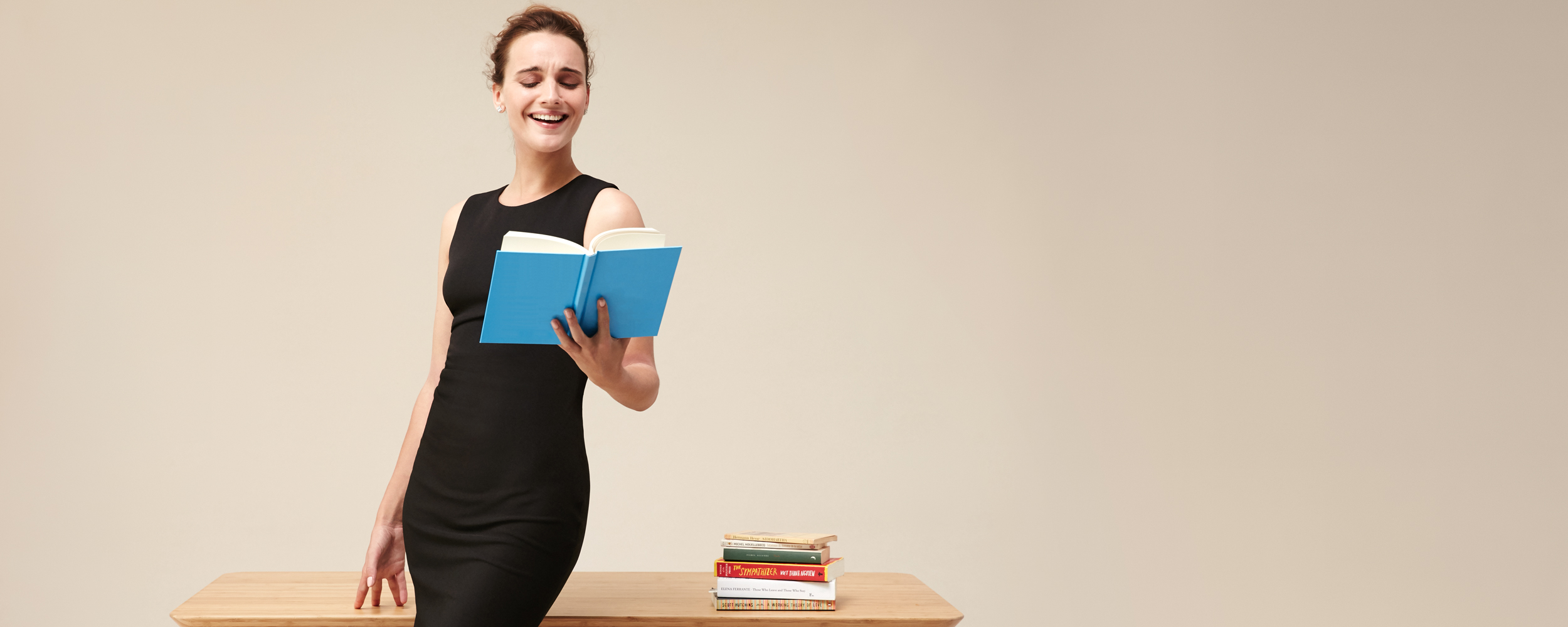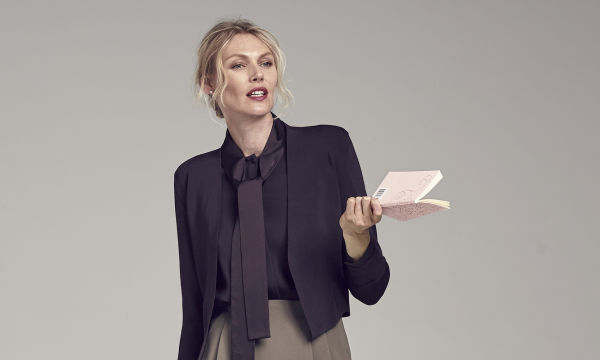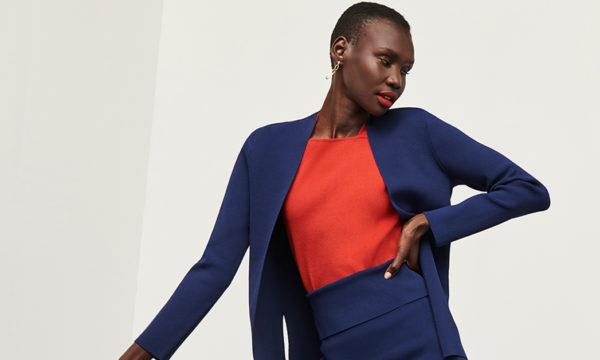7 Books We’re Reading This Fall
October 08, 2016 | Filed in: Your Brain
Attention, book clubbers: our seven picks from this season’s latest literature.
The French Chef in America: Julia Child’s Second Act, by Alex Prud’homme
Good for: Francophiles, food snobs, cooking show aficionados.
Why: Written by the same person who co-authored Julia Child’s best-selling memoir, My Life in France (he also happens to be her great-nephew), this book examines the period in Child’s life when she returned to America. In the throes of success from her then-new cookbook, Mastering the Art of French Cooking, Child faced the pressures of food-world fame by, well, making more delicious food.
Read it: While your butter-slathered chicken is roasting in the oven. Wear the Pigalle pant—basically stretchy sweatpants disguised as polished trousers—while you enjoy the result.
(Knopf, available now.)
Odes, by Sharon Olds
Good for: English majors, journal-keepers, optimists, introverts.
Why: This book is a series of, yes, odes—but the lyrical stanzas read more like miniature confessional essays than highfalutin references to ancient Greek. Olds, a Pulitzer Prize winner, addresses gender, race, and sexual politics (the book’s opening poem is “Ode to the Hymen”), as well as commonplace heartache (“Ode to the Last Thirty-Eight Trees in New York City Visible from This Window”) in the direct, visceral style that makes her work so approachable.
Read it: Curled up on a quiet Sunday afternoon with your Morandi sweater and a nice view to gaze at after you’ve finished a particularly moving verse.
(Knopf, available now.)
Scream: A Memoir of Glamour and Dysfunction, by Tama Janowitz
Good for: Neurotic humorists, Andy Warhol fans, those who wish they lived in New York in the early ’80s (or actually did), caretakers of elderly parents.
Why: Against all odds, considering the subject matter, this book his hilarious. In 1986, Janowitz became the poster child for New York’s most brilliant and cash-poor strivers when she published Slaves of New York, a celebrated portrait of the city’s creative underclass (at the time, she lived in a meat locker in Manhattan’s then-seedy Meatpacking district). Fast forward two decades, and she’s desperately trying to keep her career afloat while taking care of her infirm mother in rural New York. Amazingly, Janowitz portrays her life’s downward spiral with deft humor and upbeat curiosity.
Read it: After a crappy day, or just when you need a snappy dose of irony, while wearing one of our new (decidedly non-’80s-looking) power blazers.
(Dey Street Books, available now.)
Commonwealth, by Ann Patchett
Good for: Anyone with a “complicated” family.
Why: It seems like everyone in our office is reading this book right now. Chronicling two families united by one brief, unexpected, and awkward love affair, Patchett does what she does best: creates unforgettable, fantastic characters that make your actual siblings seem quite normal by comparison. Sidenote: This is supposedly Patchett’s most autobiographical work to date. (And isn’t the book cover pretty?)
Read it: Before spending Thanksgiving with your extended family, while wrapped up in the cozy, comforting Stanton cardigan.
(Harper, available now.)
Victoria: The Queen, by Julia Baird
Good for: Anglophiles, history buffs, anyone obsessed with Kate Middleton (so, everybody).
Why: Who knew old Victoria was so fascinating? Born in 1819, she became the Queen of England as a teenager; she was assertive and ambitious, gave birth to nine children, had an affair with one of her servants, and consulted her personal advisors about the shape of her eyebrows (too thin?). Author Julia Baird managed to wrangle access to previously-unpublished papers at the palace—an extremely tricky feat—in order to research this vivid new portrait.
Read it: Before meeting and/or negotiating with someone intimidating and potentially ruthless (and wear the Aditi or the Sarah, our go-to power dresses). This book is a reminder that everyone, no matter how prestigious, has inexplicably weird flaws and foibles.
(Random House, November)
Frantumaglia, by Elena Ferrante
Good for: Italophiles, those obsessed with the Neopolitan novels, storytellers.
Why: Wherever you stand on the reclusive Italian author’s unmasking, there’s no question that Ferrante is an incredible novelist, and this book shows the inner workings of her writerly mind. A memoir of sorts, it delves into her relationship to her work, her books, her family, psychoanalysis, and feminism—part letter to her readers, part to herself.
Read it: When you’re feeling introspective about your career, with a glass of wine and a plate of pasta e fagioli, wearing the Lydia (it’s made from soft Italian jersey).
(Europa Editions, November)
Swing Time, by Zadie Smith
Good for: Former dancers, your best childhood friend.
Why: The novel follows two girls—childhood pals from working-class London—who both dream of becoming dancers (only one makes it). It’s about race, class, and the awkward, sometimes painful transition of friendship from adolescence to adulthood.
Read it: On the train, plane, or any mode of transportation you take to visit an old girlfriend. If a peace offering is necessary, bring her a Cloud scarf.
(Penguin Press, November)








